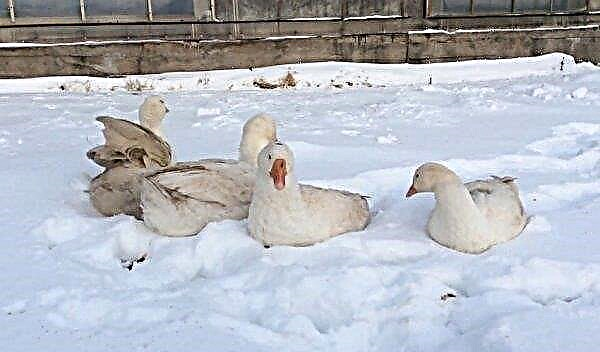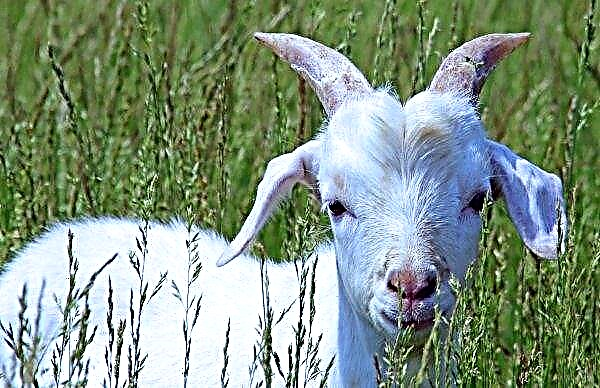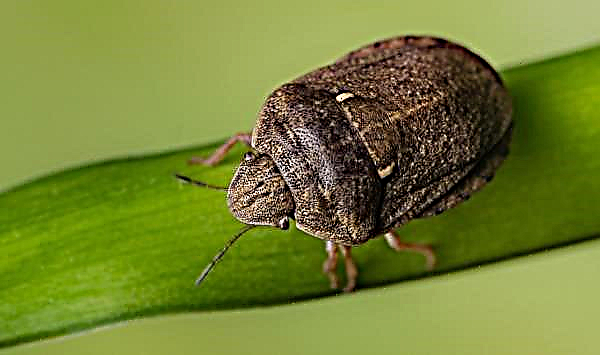In addition to food and water, almost every organism needs free access to oxygen. Living creatures fill this need with a complex, specific process called breathing. While all of its secrets have been revealed in higher animals and humans, little is known about the respiration of insects. The article will examine in detail the features of bee breathing, and also describe all the subtleties of gas exchange of insect cells with the environment.
The respiratory system of the honey bee: the main role, description, structure
Like any other living creature, honey bees need an effective system of supplying the body with air. It plays one of the key roles in ensuring the functionality of the body, supplying cells with oxygen: without this element, not a single physiological process goes through, therefore its absence leads to a gradual blockade of individual body systems, and in the future - to the death of the insect. Thanks to breathing, insects also free the body of water vapor and various metabolic products.

Despite its miniature size, the body of domestic and wild bees is a fairly complex organism with a developed metabolism. In this case, the saturation of cells with oxygen in these insects is provided by a no less complex gas exchange system than in other species.
However the bee’s breathing is a peculiar principle, which is provided by a unique set of specific organs. They contribute to the saturation of the cell with oxygen directly, in direct interaction with air, without the participation of individual carriers or portable systems (blood circulation).
Did you know? Honey bees are one of the oldest creatures on the planet. They were widespread already in the Cretaceous. — about 100 million years ago.
This is ensured by a special system of tubes spreading throughout the bee's body, the so-called trachea. The respiratory system begins from the spiracles. These are special formations that open the tracheal canal outward. They have a hole from which air is drawn into the internal channels. Each insect has 10 pairs of spiracles, most of them located on the sides of the abdomen, and only three are in the thoracic region. Each spiracle contains numerous hairs that clean the air of dust and other pollutants.
 Respiratory organs: 1-trachea; 2-branching of the trachea; 3-air bags; 4-heart; 5-back diaphragm; 6- abdominal diaphragm
Respiratory organs: 1-trachea; 2-branching of the trachea; 3-air bags; 4-heart; 5-back diaphragm; 6- abdominal diaphragm
A large trachea is formed in the form of numerous channels, on each branch of which there is an air sac - a hollow formation formed from the channels of the trachea. Several tube-vessels depart from it, each of which may consist of several tens of smaller vessels.
As they branch, they thin out to the smallest air-bearing capillaries (tracheol), which directly penetrate the cells, as well as the intercellular space. This structure of the respiratory apparatus allows the insect to easily saturate the body with oxygen, even in the case of an intensive and long flight.
Did you know? The air bag in the body of bees plays a universal role, the main of which — reduce the weight of the insect to improve flight. At the same time, participation in respiratory processes is of secondary importance.
Air change process
The change of air in the tracheal canal, air sacs and capillaries takes place alternately. A special muscle layer contracts the abdomen and the spiracles under its influence. This artificially creates a pressure difference, due to which the air masses fill the trachea and air sacs. Here, the gas mixture is filtered from various impurities, and then through the smallest capillaries under the influence of diffusion forces it spreads throughout the body and is transported to each cell.

During the interaction of cells with air due to diffusion, oxygen penetrates through the cell wall into the cytoplasm, while carbon dioxide and other metabolic by-products are released to the outside. After contraction of the abdomen, the muscle layer relaxes, due to which there is a natural alignment of the atmospheric and internal pressure of the respiratory system. The exhaust gas is discharged into the atmosphere, after which the process starts again. The central nervous system is engaged in the control of its activity.
What determines the intensity of breathing of a bee
The respiration rate of bees is not a constant value, so the number of respiratory cycles in them can vary greatly. This indicator mainly depends on the activity of insects and the ambient temperature. In a relaxed and calm state, during the winter, they take only a few breaths per minute.
 With the active collection of honey, the number of respiratory movements can increase to 100 per minute, and if at the same time the heat of summer heat is observed, then the intensity of sighs can reach up to 200 per minute.
With the active collection of honey, the number of respiratory movements can increase to 100 per minute, and if at the same time the heat of summer heat is observed, then the intensity of sighs can reach up to 200 per minute.
Also quite often, the intensity of the respiratory system is associated with the sex of the insect. Worker bees (female) have significantly less air bags than drones (males), so they will need more breathing movements to replenish the body with the necessary oxygen.
Important! Respiratory rate depends on the amount of oxygen in the atmosphere. The smaller it is, the more active will be breathing and air absorption.
The amount of oxygen that bees need for a normal existence
The need for honey bees in the air is quite large. If we take into account the ratio of the body mass of the average insect and the activity of its air consumption, it turns out that a bee needs several times more air than a person. The minimum amount of oxygen that an average bee needs is 0.4–1 ml / hour. Such an intensity of consumption is observed during winter suspended animation.
During active life, one bee needs at least 65 ml of oxygen per hour. When flying, this indicator increases at times: one working bee during the collection of nectar needs at least 400 ml of oxygen per hour.
 The need for larvae in fresh air is no less great: one open brood frame can absorb up to 1300 ml of oxygen per hour. All this makes beekeeping a fairly oxygen-intensive industry.
The need for larvae in fresh air is no less great: one open brood frame can absorb up to 1300 ml of oxygen per hour. All this makes beekeeping a fairly oxygen-intensive industry.
How does the change in ambient temperature affect the gas exchange of bees and brood
The gas exchange activity of the organism of bees and brood with the environment depends on the air temperature. The least active respiration is observed at a temperature close to + 10 ° C, which causes a state of suspended animation in insects. The most intensive process takes place at a temperature of more than + 30 ° C, while the heat can provoke its acceleration by 5 times.
Important! To reduce the heat load on insects, ventilation openings must be provided in the hives. They should be installed so that the structure is subjected to maximum ventilation, but is protected from drafts.
For example, one can imagine the fact that the average family, numbering about 15 thousand individuals, during active breeding and procuring nectar at a temperature of +30 ... + 35 ° С per hour consumes about 250 liters of oxygen, releasing 50-60 liters of carbon dioxide gas and 300 g of water vapor. If the temperature drops to + 11 ° С, the oxygen consumption decreases to 4 l at the same time, while the insects release only 800–1000 g of carbon dioxide and about 1 g of water back.

Breathing is one of the most important physiological processes that ensures the stable functioning of the bees. Therefore, these insects, like any other creatures, require an abundance of clean air. It is ensured by a rather complex respiratory system consisting of branched tracheal canals. The need for oxygen is determined by many factors, but the most important of them are the ambient temperature and the activity of insects.












